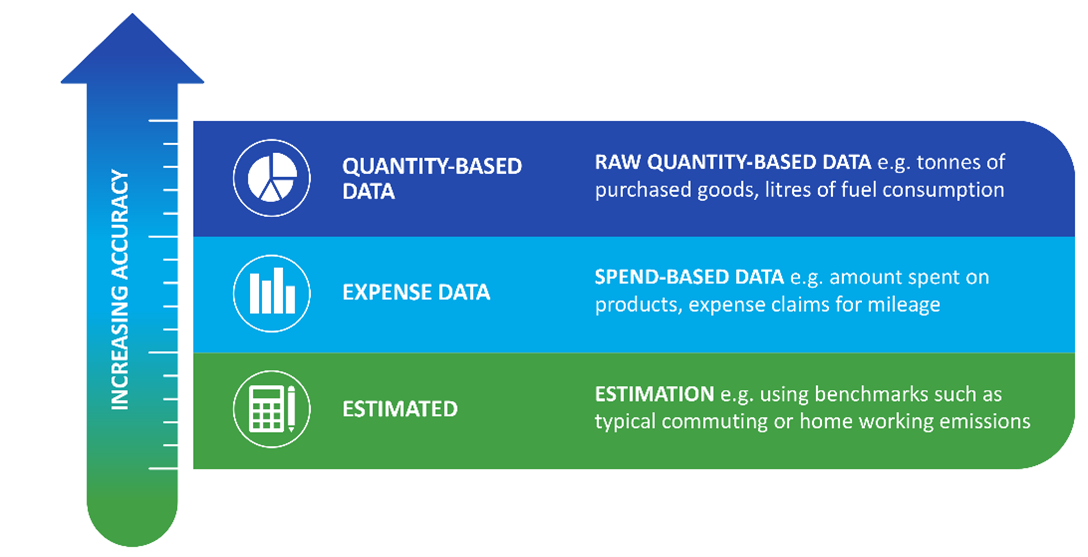Screening
Companies should at the outset assess whether each of the 15 categories is relevant. Categories that are not, should be omitted, for example, if a company does not own any franchises, then category 14 will be excluded. Some Scope 3 emission sources may be immaterial, and you may wish to exclude these categories from ongoing reporting once you’ve quantified them in the screening process. The SBTi guidance suggests that companies may exclude a maximum of 5% of emissions from their total Scope 3 inventory when setting a target, but you should set this threshold based on your individual circumstances.
Data quality
Data should be collected over a 12-month period following either a calendar or financial year that represents your business's operational activities. It is essential to gather data that reflects emission-producing activities over the reporting period. This involves using reliable sources and employing robust data collection methods to minimise errors and ensure completeness. This hierarchy can be applied to all categories of Scope 3, though spend-based does not work for several downstream categories.

Good record-keeping is critical for maintaining transparency and accountability. All data sources, methodologies, and assumptions used in the data collection process should be well-documented, and calculations clearly set up in spreadsheets or specialist software.
Good data management and documentation facilitate auditing and reviewing, especially if you choose to undertake third-party verification of your inventory. For further guidance, ISO14064 provides guidelines for managing data quality, including measures for accuracy, completeness, consistency, and transparency in GHG emissions data collection and reporting processes.
Calculating emissions
All GHG emissions calculations are ultimately based on the same principles.

Verification and assurance
Data quality is key for reliable public disclosures and robust tracking of performance over time. The robustness of your emissions calculations and report can be tested and proven by commissioning verification of your data and achievement of a level of assurance. The most widely applied standard against which Scope 3 emissions can be verified is ISO14064:3
https://www.iso.org/standard/66455.html This verification work is carried out by dedicated assurance and consultancy companies as well as many accountancy firms. It is particularly worthwhile to carry out ahead of submissions to CDP and the Science Based Targets Initiative.
Download the Scope 3 Accounting Guide to begin your GHG inventory today.
